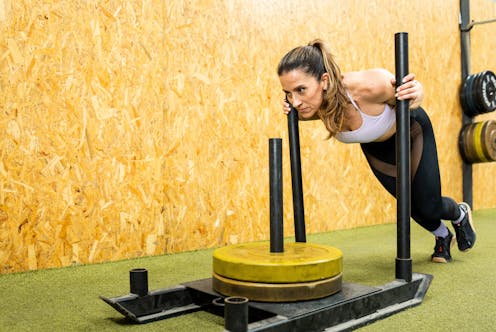
The menopause affects all women differently – and each person’s experience is unique. While some women view menopause as a new lease of life, others can experience a host of new symptoms and changes to their body. Many of these changes can have an effect on health, too — even increasing a woman’s risk of developing certain health conditions.
One example is a woman’s risk of developing cardiometabolic diseases, which can increase after the menopause. Cardiometabolic disease refers to a group of common chronic conditions that affect the heart, blood vessels and metabolic system. These include cardiovascular disease, type 2 diabetes and associated risk factors (such as high blood pressure).
Prior to the menopause, women are seen to have a lower prevalence of cardiometabolic disease when compared to men. However, that risk advantage reduces after the menopause. While there are many reasons for this such as age, the hormonal changes that accompany the menopause is also a key factor.
During the menopause, several key hormones – such as oestrogen, progesterone and testosterone – undergo significant changes. These hormonal changes can cause various menopause symptoms – such as hot flashes and mood swings. Importantly, they can also cause physiological changes which can alter the way the cardiovascular and metabolic systems function.
For example, hormone fluctuations during the menopause are linked with hypertension, changes in cholesterol levels (specifically an increase in “bad” LDL cholesterol), an increase in stomach fat and changes in how the body processes blood sugar.
All of these physiological changes are key risk factors in a person’s likelihood of developing a cardiometabolic disease. This may explain why some post-menopausal women are at greater risk of developing cardiovascular disease compared to pre-menopausal women of the same age.
Notably, oestrogen – the primary female sex hormone – declines significantly during the menopause. Not only is oestrogen crucial for regulating the menstrual cycle, it has other physiological roles – such as protecting the heart. Hence, oestrogen’s decline during the menopause could play a role in a woman’s cardiometabolic disease risk.
How exercise can help
Many of the prescription drugs available to combat menopause symptoms may also help lower a person’s risk of cardiometabolic disease. But this isn’t the only way to manage risk. A meta-analysis I previously published with colleagues shows that combining strength and endurance exercise can also help post-menopausal women lower their risk of cardiometabolic disease through improving several risk factors.
We looked at 40 studies which included 2,132 participants in total. We found that post-menopausal women who performed at least 12 weeks of combined endurance and strength workouts at a moderate- to high-intensity had greater improvements in multiple cardiometabolic disease risk factors when compared to women who completed alternative forms of exercise.
Participants who did combined strength and endurance workouts at a moderate- to high-intensity significantly improved their stomach fat, cholesterol levels, blood sugar levels and blood pressure.
But, while the combined endurance and strength training groups saw the greatest overall improvements in cardiometabolic risk, it’s worth noting that most forms of regular exercise improved at least one cardiometabolic disease risk factor, regardless. For instance, our review found that nearly all types of exercise we looked at improved waist circumference.

This shows us that regular physical activity should not be underestimated as an option for reducing the risk of cardiometabolic disease in post-menopausal women. Furthermore, combining endurance and strength exercise into one workout is time-efficient and flexible.
Getting started
The right exercise programme for you will vary depending on your starting fitness level. But aim to begin with exercises that can comfortably be done while talking – yet are intense enough that you’d have trouble holding a tune or singing.
Here’s an example of what an effective endurance and strength workout session could look like:
- Start with five minutes of gentle walking – either around your home or outside.
- Move onto 20-30 minutes of brisk walking or cardio (such as cycling, jogging or dancing).
- Next, do 20-30 minutes of strength training. Some movements you can try include chair squats, wall push-ups and calf raises. You can begin with just your body weight at first. As you gain confidence, you an incorporate more weight or elastic bands for more resistance.
- Finally, do a five-minute cool-down where you perform gentle stretches or a very light walk to bring your heart rate back down.
Based on our research, a combination of endurance and strength training has the greatest benefit on cardiometabolic risk post-menopause when performed for at least 12 weeks at a moderate to high intensity.
Of course, every person is different – and some people may prefer to do other types of exercise. The key is to start somewhere.
Rachel Churm does not work for, consult, own shares in or receive funding from any company or organisation that would benefit from this article, and has disclosed no relevant affiliations beyond their academic appointment.
This article was originally published on The Conversation. Read the original article.







